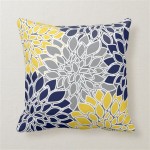The Enduring Appeal of Cement Tile Flooring and Decor
Cement tiles, also known as encaustic cement tiles or hydraulic tiles, represent a unique and historically significant flooring and decor choice. These tiles are not fired in a kiln like ceramic or porcelain tiles; instead, they are created through a hydraulic pressing process that combines layers of colored cement and aggregates. This manufacturing method results in tiles with vibrant colors, intricate patterns, and a distinctive texture that distinguishes them from other tiling options. The inherent durability and design versatility of cement tiles contribute to their enduring popularity in residential and commercial spaces.
The resurgence of cement tiles in recent years is driven by their capacity to seamlessly integrate into diverse design aesthetics. From the revitalization of historic homes to the creation of modern, minimalist interiors, cement tiles offer a flexible design solution. Their ability to be customized in terms of color palettes and patterns provides architects and designers with a high degree of control over the final aesthetic outcome. Moreover, the inherent sustainability of cement tiles, due to their long lifespan and minimal energy consumption during production, aligns with growing environmental consciousness.
Historical Context and Manufacturing Process
The origins of cement tiles can be traced to mid-19th century Europe, specifically France and England. As a response to the expensive and labor-intensive process of creating encaustic ceramic tiles, which involved inlaid clay designs fired in a kiln, cement tiles emerged as a more affordable and efficient alternative. The hydraulic press, a relatively new technology at the time, enabled the mass production of these tiles, making them accessible to a wider market. The Art Nouveau and Victorian eras saw widespread adoption of cement tiles, adorning the floors of residences, public buildings, and commercial establishments.
The manufacturing process involves several distinct layers. The first layer, the wear layer, is composed of a mixture of fine cement, marble powder, and pigments. This layer determines the color and pattern of the tile and is poured into a metal mold called a divider. The divider separates the different colors, ensuring a sharp and clean design. Once the colored layer is in place, a second layer, often consisting of coarser cement and sand, provides structural support. Finally, a backing layer made of a strong cement mixture reinforces the tile and provides a bonding surface for installation.
After the layers are assembled, the tile is placed in a hydraulic press and subjected to intense pressure. This process compacts the layers, bonding them together and creating a dense, durable tile. The tiles are then cured in water for several weeks, allowing the cement to hydrate and achieve its ultimate strength. This curing process is crucial for the longevity and performance of cement tiles.
Design Versatility and Application
The design possibilities with cement tiles are virtually limitless. Traditional patterns, such as geometric motifs, floral designs, and arabesques, remain popular choices. However, modern production techniques and custom color matching capabilities have expanded the design scope to include abstract patterns, contemporary graphics, and even personalized designs. This allows architects and designers to create truly unique and bespoke spaces.
Cement tiles find application in a wide range of settings. In residential environments, they are commonly used in kitchens, bathrooms, hallways, and entryways. Their durability makes them suitable for high-traffic areas, while their aesthetic appeal can transform ordinary spaces into design statements. In commercial settings, cement tiles are frequently employed in retail stores, restaurants, hotels, and office buildings. Their ability to withstand heavy foot traffic and their visual impact make them an ideal choice for creating memorable and inviting interiors.
Beyond flooring, cement tiles are also used for decorative purposes. They can be incorporated into backsplashes, accent walls, and even furniture design. Their tactile texture and rich colors add depth and character to any space. The modular nature of cement tiles allows for creative layouts and installations, such as borders, medallions, and customized patterns.
Furthermore, cement tiles are highly adaptable to different design styles. They complement traditional architectural details in historic homes, adding a touch of authenticity and charm. In modern interiors, they can be used to create a focal point or to introduce a sense of warmth and texture to minimalist spaces. Their versatility makes them a valuable design tool for achieving a variety of aesthetic goals.
Installation and Maintenance Considerations
Proper installation is crucial for the long-term performance and appearance of cement tiles. Due to their porous nature, cement tiles require sealing before and after grouting. This helps to prevent staining and protects the tiles from moisture damage. A penetrating sealer is recommended, as it soaks into the tile and provides a protective barrier without altering the tile's natural appearance.
The subfloor must be level and stable to ensure a successful installation. Uneven subfloors can lead to cracking and lippage, which is the uneven alignment of tiles. A thin-set mortar specifically designed for natural stone or cement tiles should be used. This type of mortar provides a strong bond and accommodates the slight dimensional variations that can occur in cement tiles. During installation, it is important to maintain consistent grout lines and to use a non-sanded grout to avoid scratching the tile surface.
Regular maintenance of cement tiles involves sweeping or vacuuming to remove loose dirt and debris. For cleaning, a neutral pH cleaner specifically formulated for cement tiles is recommended. Harsh chemicals and abrasive cleaners should be avoided, as they can damage the sealant and etch the tile surface. Stains should be addressed promptly to prevent them from penetrating the tile. Re-sealing the tiles periodically, typically every one to two years, is necessary to maintain their protective barrier and to keep them looking their best.
While cement tiles are durable, they are also prone to scratching and staining if not properly cared for. Placing mats at entrances and using furniture pads can help to prevent scratches. Spills should be wiped up immediately, and acidic substances, such as vinegar or lemon juice, should be avoided. With proper installation and maintenance, cement tiles can last for generations, providing enduring beauty and character to any space.
The initial investment in cement tiles might be higher compared to some other flooring options, but their longevity, aesthetic appeal, and design versatility make them a worthwhile consideration. They offer a unique combination of historical charm, modern adaptability, and sustainable characteristics that resonate with homeowners and designers alike. As a flooring and decor choice, cement tiles represent a timeless investment that adds value and character to any environment.

Concrete Gray Ceramic Tile Floor And Decor
Cement Tile Concrete Floor Decor

Concrete Gray Ceramic Tile Floor And Decor

Concrete Tile Bathroom Floor Ideas Inspiration Rustico

Floor Tile Trends Atlanta Home Improvement

Fleur Bleu Encaustic Cement Tile Floor And Decor

Summer Catalog 2024 Floor Decor Moda Del Mar Equilibrio Black Iv Encaustic Cement Tile 8 X 1 2 Inch Thick

Spanish Floor Tile Avente

Fleur Bleu Encaustic Cement Tile Floor And Decor
Tile Flooring Wall Tiles Floor Decor








